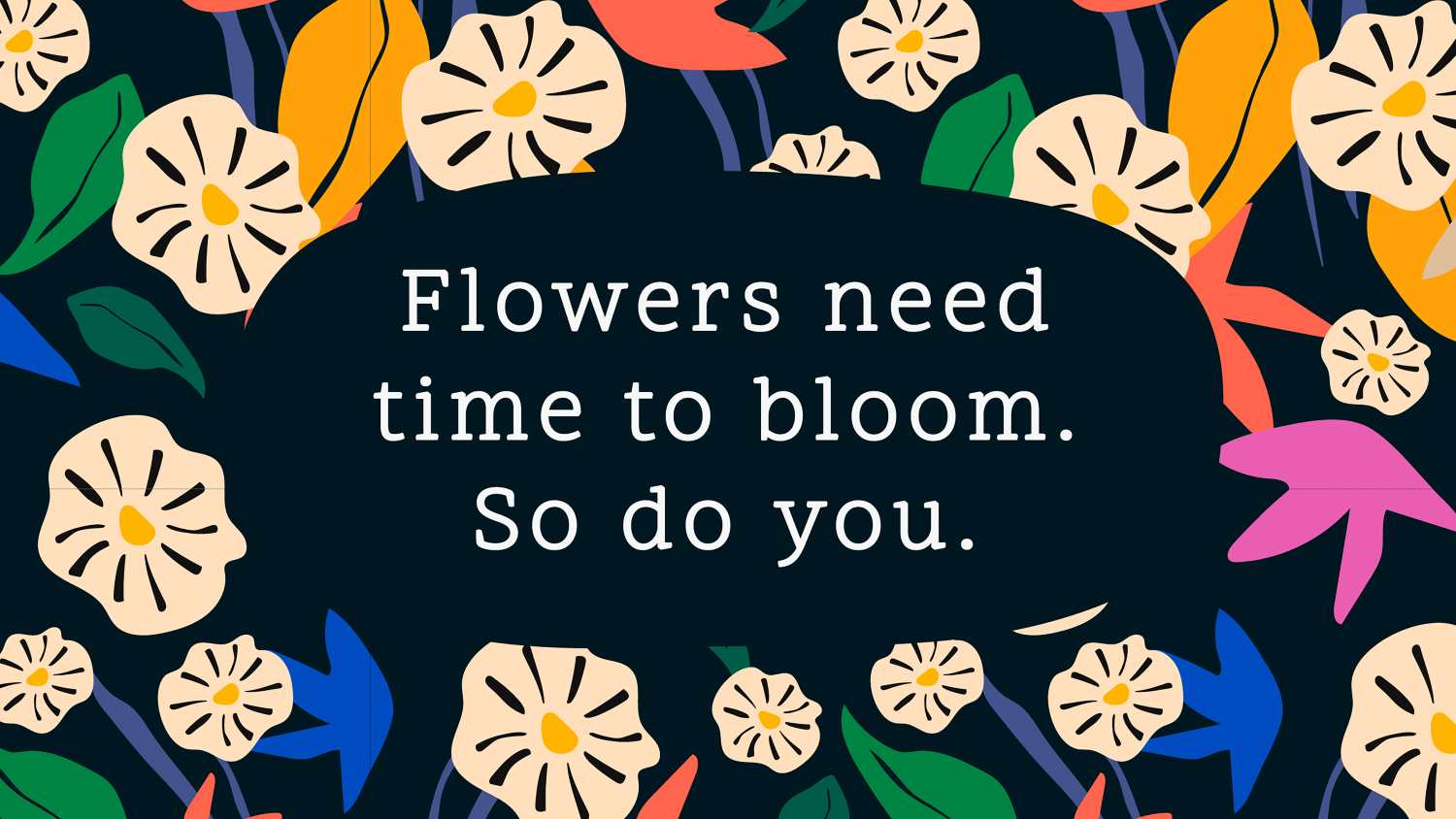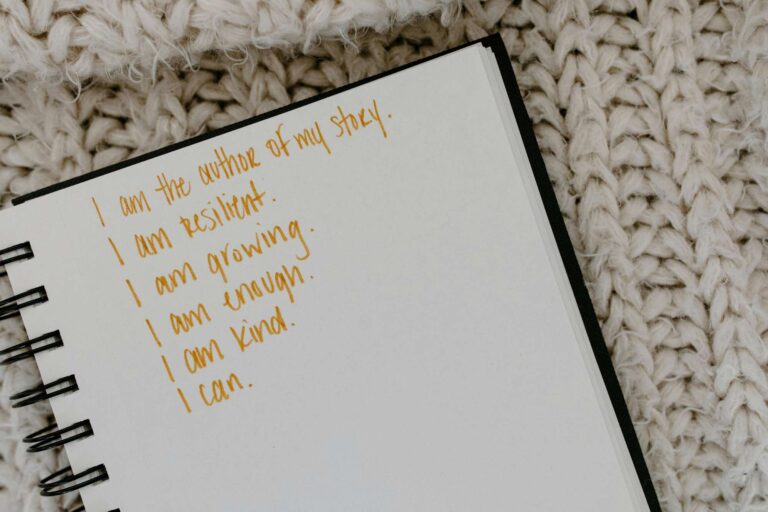What’s your self criticism style? Discover how your inner critic operates
Your inner critic has a personality.
It’s not just a random collection of harsh thoughts – it’s a specific voice with patterns, triggers, and favorite phrases that it uses to tear you down. And understanding exactly how your inner critic operates is the key to finally quieting it.
Maybe your inner critic is a relentless perfectionist, telling you nothing is ever good enough. Or perhaps it’s a comparison machine, constantly measuring you against everyone else. It could be an overthinker, spiraling you into endless “what if” scenarios, or a self-blamer that makes everything somehow your fault.
Each type of inner critic requires a different approach to overcome. What works for shutting down the perfectionist won’t work for the comparer. The strategies that help the overthinker won’t help the self-blamer.
That’s why this quiz exists – to help you identify your specific self criticism style so you can use the right tools to build a kinder, more supportive inner voice.
Why your self criticism style matters
Most people try to fight their inner critic with generic advice: “just think positive” or “stop being so hard on yourself.” But that’s like trying to treat every illness with the same medicine. It doesn’t work because different critics need different solutions.
When you understand your specific self criticism style, you can:
- Recognize your patterns faster – you’ll spot your critic’s favorite tricks before they spiral you down.
- Use targeted strategies – you’ll know exactly which tools work for your type of self criticism.
- Interrupt the cycle sooner – you’ll catch yourself earlier in the criticism spiral.
- Build the right kind of self-compassion – you’ll develop the specific type of kindness your brain needs to hear.
Your inner critic isn’t just “negativity” – it’s a specific flavor of negativity that developed for specific reasons. Once you know what you’re dealing with, you can finally start changing it.

The four self criticism styles
While working on my own self criticism, I realized there’s basically 4 styles. Most people have one dominant style, though you might recognize yourself in multiple categories.
The perfectionist critic
“It’s not good enough. You could have done better. Why can’t you get this right?”
This critic sets impossible standards and then beats you up for not meeting them. Nothing is ever quite right, and there’s always something that could be improved.
The comparison critic
“Look how much better everyone else is doing. You’re falling behind. They have it all figured out and you don’t.”
This critic constantly measures your life against others’ highlight reels. It makes you feel like everyone else got a manual for life that you somehow missed.
The overthinking critic
“What if this goes wrong? You should have thought of that. Now you’re going to embarrass yourself. Everyone will judge you.”
This critic creates endless worry scenarios and convinces you that catastrophe is always just around the corner. It keeps you stuck in analysis paralysis.
The self-blaming critic
“This is all your fault. You always mess things up. If only you were different, this wouldn’t have happened.”
This critic makes everything your responsibility, even things completely outside your control. It convinces you that you’re the problem in every situation.
Ready to discover which style dominates your inner dialogue?
The self criticism style quiz
For each situation below, choose the response that sounds most like your typical inner dialogue. Be honest – this is about recognizing patterns, not judging yourself for having them. Write down your letter choice (A, B, C, or D) so you can identify your style at the end.
Situation 1: You’re replaying a conversation in your head, worried you sounded awkward.
- “I should have been more articulate. That comment was completely unnecessary.”
- “Everyone else sounds so much more natural than I do. They must think I’m the awkward one.”
- “What if they think I’m weird now? What if this changes how they see me?”
- “I’m so socially awkward. I always say the wrong thing. No wonder people avoid me.”
Situation 2: You look in the mirror and immediately focus on your flaws.
- “I should have taken better care of my skin. This is what happens when I don’t prioritize self-care.”
- “Everyone else looks so much better than I do. I’m clearly not aging well.”
- “What if people notice how tired I look? What if I’m becoming less attractive?”
- “I look terrible. I was never going to be attractive anyway.”
Situation 3: You didn’t finish everything on your to-do list today.
- “I should have been more efficient with my time. A productive person would have gotten this done.”
- “Other people accomplish so much more in a day than I do. I’m clearly the disorganized one.”
- “What if I fall further behind tomorrow? What if I let people down?”
- “I’m so lazy and useless. I always fail to follow through on what I say I’ll do.”
Situation 4: You’re scrolling social media and comparing yourself to others.
- “I should be doing more with my life. I should be further along by now.”
- “Everyone else has their life so together. I’m clearly falling behind everyone I know.”
- “What if I’m wasting my potential? What if I look back with regret?”
- “My life is pathetic compared to everyone else’s. I’m just not the kind of person who succeeds.”
Situation 5: You skipped your workout or ate something you consider “unhealthy.”
- “I should have more willpower than this. This is completely unacceptable behavior.”
- “Other people never struggle with motivation like I do. I’m clearly the one who can’t stick to anything.”
- “What if this ruins all my progress? What if I develop health problems?”
- “I have no self-control. I always give up on myself. I’m never going to be healthy.”
Situation 6: Someone gives you constructive feedback on something important to you.
- “I should have caught these issues myself. This feedback shows I wasn’t careful enough.”
- “They probably don’t have to give this feedback to other people. I’m clearly not as competent.”
- “What if they think I’m not capable? What if they lose confidence in me?”
- “I’m terrible at this. This proves I don’t have what it takes. I should give up.”
Situation 7: You’re struggling to learn something new and it’s not coming naturally.
- “I should be picking this up faster. Good learners don’t struggle this much with basics.”
- “Everyone else understands this so easily. I’m clearly not as naturally talented.”
- “What if I’m wasting my time on something I’ll never be good at? What if I embarrass myself?”
- “I’m just not smart enough for this. This is typical me – thinking I could do something I have no talent for.”
Situation 8: You’re taking time to rest or relax instead of being productive.
- “I should be working on my goals right now. Successful people don’t waste time like this.”
- “Other people probably use their downtime more productively. I’m clearly lazier than most people.”
- “What if I’m falling behind while everyone else gets ahead? What if I regret this later?”
- “I’m so lazy and worthless. This proves I’m not going anywhere in life.“

Your self criticism style results
Count your responses:
- A responses = The perfectionist critic
- B responses = The comparison critic
- C responses = The overthinking critic
- D responses = The self-blaming critic
Your dominant style is the letter you chose most often. If you have a tie, read both descriptions – you might have a combination style.
The perfectionist critic: “Nothing is ever good enough”
Most A responses: Your inner critic is a relentless perfectionist that sets impossible standards and then punishes you for being human. It believes that anything less than perfect is failure, and it constantly moves the goalposts so you can never quite succeed.
How your critic operates:
- Uses words like “should,” “must,” and “always”
- Focuses on what’s wrong rather than what’s right
- Sets standards that are impossible to maintain consistently
- Makes you feel like your worth depends on flawless performance
- Convinces you that other people expect perfection from you
What it costs you:
- Procrastination – you avoid starting things because you know they won’t be perfect.
- Burnout – you exhaust yourself trying to meet impossible standards.
- Dissatisfaction – you can’t enjoy your accomplishments because they’re never “good enough.”
- Paralysis – you get stuck revising and “improving” instead of finishing.
Your antidote strategies:
- Practice “good enough” deliberately: Choose one area of your life where you’ll consciously accept “good enough” instead of perfect. Start small – maybe it’s sending emails without re-reading them five times.
- Set “minimum viable” standards: Before starting any project, define what “done” looks like at a basic level. When you hit that standard, you’re finished, even if you could theoretically improve it.
- Celebrate B+ work: Make a habit of acknowledging when something is good enough to serve its purpose, even if it’s not your absolute best work.
- Challenge “should” statements: Every time you catch yourself saying “I should,” ask: “According to who? Is this standard actually necessary, or is it just my critic talking?”
The perfectionist’s mantra: “Done is better than perfect, and good enough is often excellent.”
This practical guide to positive self talk provides additional techniques for countering perfectionist thinking.
The comparison critic: “Everyone else has it figured out.”
Most B responses: Your inner critic is constantly measuring your life against others’ highlight reels. It’s convinced that everyone else got a secret manual for life that you somehow missed, and it uses other people’s apparent success to prove your inadequacy. Learning to stop comparing yourself to others frees you from the constant measurement trap.
How your critic operates:
- Constantly scans for evidence that others are doing better.
- Assumes everyone else’s life is easier or more successful.
- Ignores your unique circumstances and advantages.
- Uses social media and others’ achievements as weapons against you.
- Makes you feel like you’re always behind or falling short.
What it costs you:
- Imposter syndrome – you feel like a fraud because you’re not “as good” as others.
- Lost authenticity – you try to be like others instead of developing your own path.
- Decreased motivation – why try when everyone else is already ahead?
- Relationship issues – you struggle to celebrate others’ success without feeling diminished.
Your antidote strategies:
- Curate your inputs: Unfollow or mute social media accounts that consistently trigger comparison. Follow accounts that inspire you without making you feel inadequate.
- Practice “good for them” thinking: When you notice comparison arising, deliberately think “good for them” about others’ success. This breaks the zero-sum thinking that says their success means your failure.
- Focus on your unique journey: Keep a “progress journal” where you track your own growth over time. Compare yourself to where you were last month or last year, not to other people.
- Remember the behind-the-scenes reality: When comparison hits, remind yourself: “I’m comparing my behind-the-scenes to their highlight reel.” Everyone struggles; not everyone shares it.
The comparer’s mantra: “My timeline is my timeline, and everyone’s path is different.”
The overthinking critic: “What if everything goes wrong?”
Most C responses: Your inner critic is a catastrophe machine that turns every decision into a potential disaster. It creates elaborate worst-case scenarios and convinces you that if you just think hard enough, you can prevent all possible negative outcomes.
How your critic operates:
- Starts sentences with “What if…” and spirals from there
- Creates detailed disaster scenarios that feel completely real
- Convinces you that worry equals preparation
- Makes you second-guess decisions you’ve already made
- Keeps you stuck in analysis paralysis
What it costs you:
- Decision paralysis – you can’t choose because every option has potential downsides.
- Anxiety – your nervous system is constantly activated by imaginary threats.
- Missed opportunities – you avoid risks because you’ve already imagined all the ways they could fail.
- Exhaustion – mental energy gets drained by constant “what if” thinking.
Your antidote strategies:
- Set a “worry window”: Give yourself 15 minutes a day to worry about things. Outside that window, tell your brain: “Not now, we’ll deal with this during worry time.”
- Ask: “Is this helpful thinking?”: When you catch yourself spiraling, ask: “Is this thought helping me solve a problem or just creating anxiety?” If it’s not helpful, consciously redirect.
- Practice the “so what?” technique: When your brain creates a disaster scenario, ask: “So what would I do if that actually happened?” Often you’ll realize you’d figure it out, which reduces the fear.
- Focus on what you can control: Make lists dividing your concerns into “things I can influence” and “things I can’t control.” Put your energy only into the first category.
The overthinker’s mantra: “I don’t need to solve problems that don’t exist yet.”
The self-blaming critic: “Everything is your fault.”
Most D responses: Your inner critic has convinced you that you’re responsible for everything that goes wrong, even things completely outside your control. It attacks your core sense of self and makes you believe that you’re fundamentally flawed or broken.
How your critic operates:
- Makes sweeping statements about your character (“I always…” “I never…”)
- Takes responsibility for things that aren’t your fault
- Uses your mistakes as evidence that you’re a bad person
- Ignores external factors that contribute to problems
- Attacks your identity rather than your actions
What it costs you:
- Low self-worth – you believe you’re fundamentally flawed or inadequate.
- Over-responsibility – you exhaust yourself trying to control things outside your influence.
- Relationship issues – you either avoid relationships or become a people-pleaser.
- Depression – constant self-blame creates hopelessness and despair.
Your antidote strategies:
- Practice the “friend test”: When your inner critic attacks, ask: “Would I say this to a good friend in the same situation?” If not, don’t say it to yourself.
- Separate actions from identity: Instead of “I’m stupid,” try “I made a mistake.” Focus on what you did, not who you are.
- Look for external factors: When something goes wrong, deliberately list all the factors outside your control that contributed to the situation.
- Practice self-compassion phrases: Develop kind responses to counter the self-blame: “I’m human and humans make mistakes,” “I’m doing the best I can with what I know right now.”
The self-blamer’s mantra: “I am not my mistakes, and I deserve the same kindness I’d give others.”

Combination styles: When you have multiple critics
If your responses were split between two styles, you likely have a combination critic that uses different tactics in different situations. This is actually very common!
Common combinations:
- Perfectionist + comparer: You set impossible standards AND constantly measure yourself against others.
- Overthinking + self-blaming: You catastrophize AND make it all your fault.
- Perfectionist + overthinker: You demand perfection AND worry about all the ways you might fail.
For combination styles: Use strategies from both of your dominant types, and pay attention to which critic shows up in which situations.
Transforming your self criticism
Now that you know your self criticism style, you can start the real work of transformation. Remember:
- Your inner critic isn’t evil – it developed to try to protect you from pain, rejection, or failure. Thank it for its intention, then show it a better way.
- Change takes practice – you’ve been listening to this critic for years. It will take time to develop a new, kinder inner voice.
- Progress isn’t linear – some days your self criticism will be louder than others. This doesn’t mean you’re failing; it means you’re human.
- You’re not alone – everyone has an inner critic. The people who seem most confident have just learned to manage theirs better.
Your daily practice for quieting your critic
Morning check-in: Ask yourself, “How can I be kind to myself today?”
Midday reset: When you notice your critic getting loud, pause and use your specific antidote strategy.
Evening reflection: Ask, “What did I do well today?” and “How did I grow or learn?”
Your inner critic has had years to perfect its strategies. Now it’s time to give your inner supporter the same level of practice and attention. These 7 reframes help you turn your critic’s harshest attacks into supportive responses.
Ready to rewrite your inner dialogue?
Understanding your self criticism style is the first step toward freedom from harsh inner dialogue. But knowing your pattern is just the beginning – the real transformation happens when you consistently practice new ways of thinking about yourself.
Your inner critic learned to be harsh because it thought that would keep you safe. Now you can teach it that kindness is actually more effective than cruelty, that growth happens through support rather than attack.
The voice in your head has tremendous power over your life experience. By choosing to understand and transform your specific type of self criticism, you’re taking control of one of the most influential factors in your happiness and success.
What would change in your life if your inner voice became your biggest supporter instead of your harshest critic?
Ready to transform your inner critic into your inner cheerleader? My Become your own cheerleader workbook provides 30 days of targeted exercises based on your specific self criticism style. Because generic self-help doesn’t work – you need strategies designed for exactly how YOUR inner critic operates.







